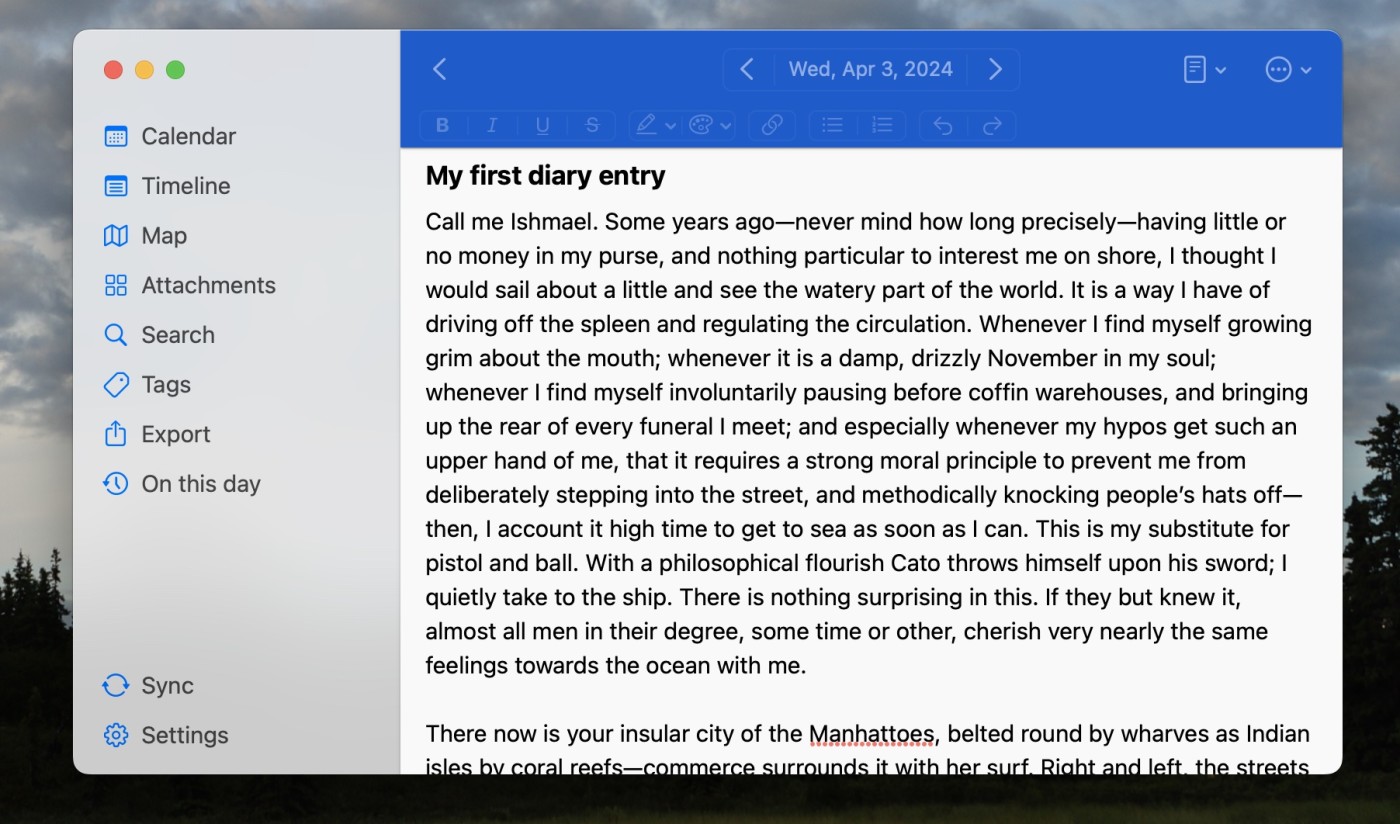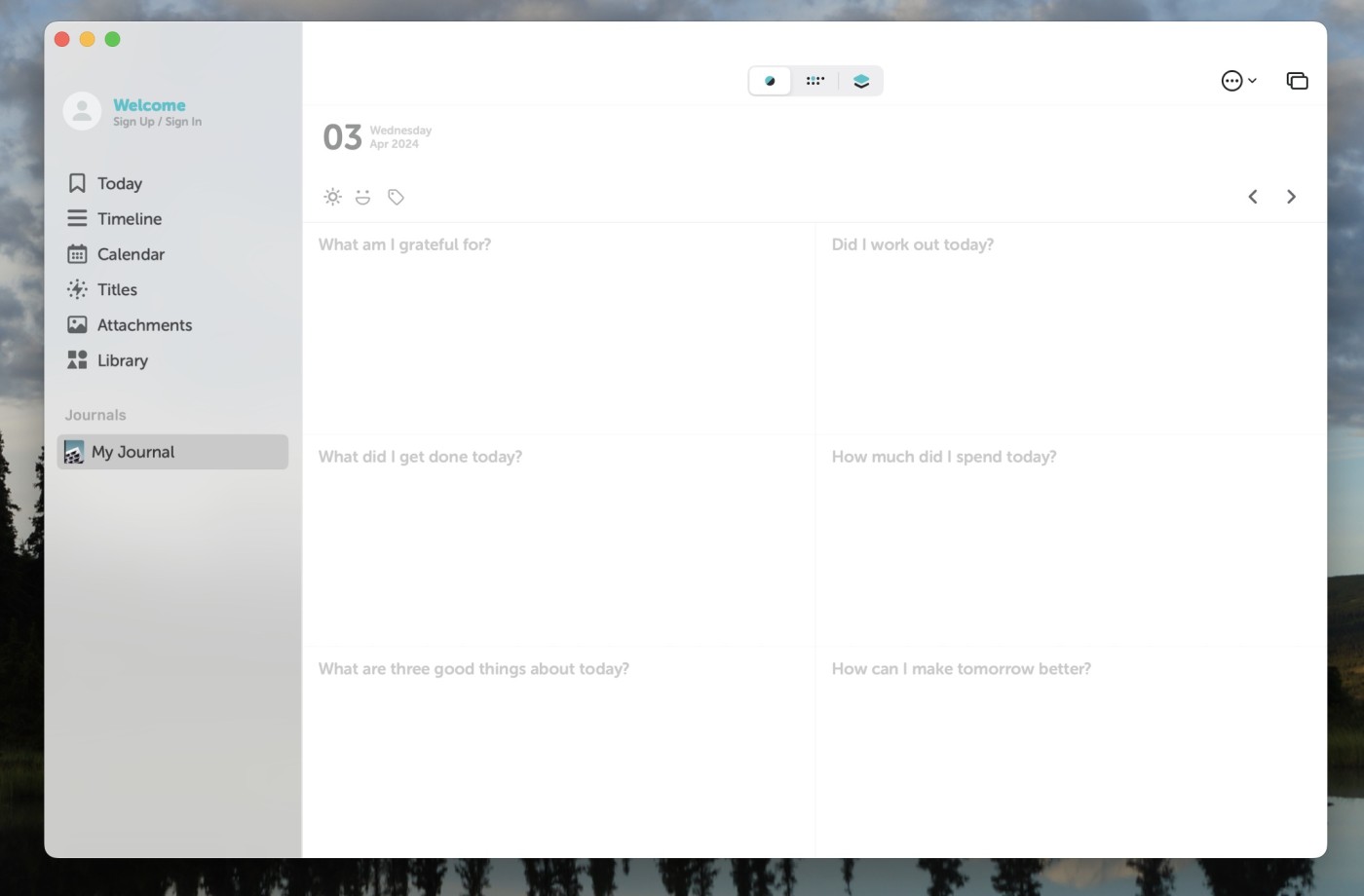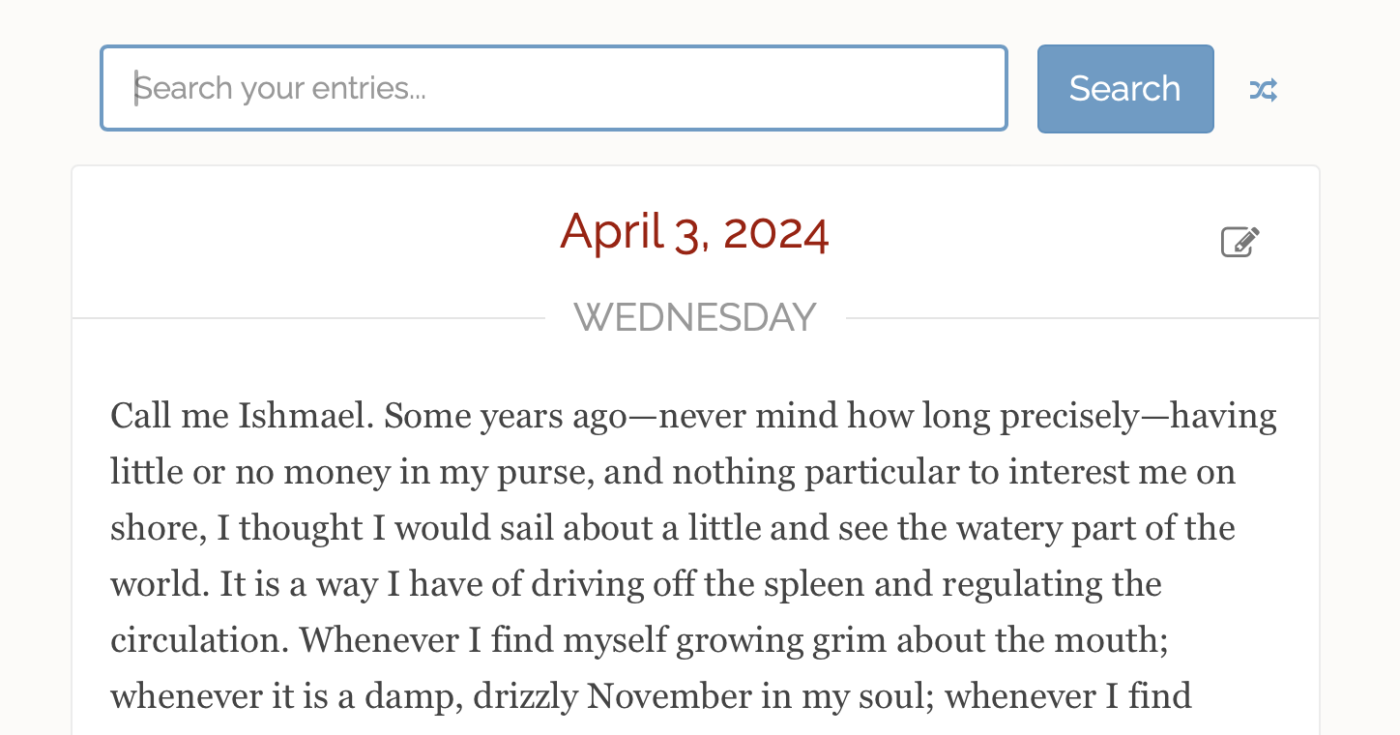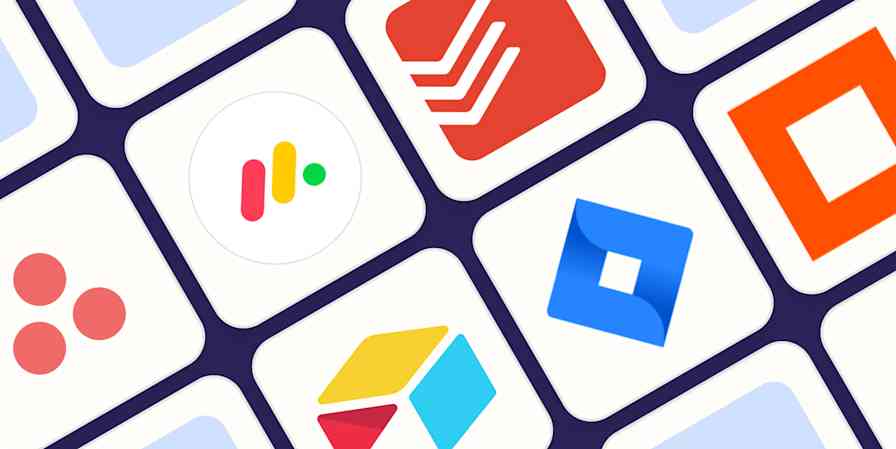There's a reason so many successful people keep a journal: it works. Taking the time to gather your thoughts and experiences, then write them down, is a simple way to manage stress, enhance creativity, increase happiness, improve health, and increase work performance.
The trouble is, keeping a journal isn't easy. It takes dedication to this new habit and a willingness to open up when writing on a blank page. What have you done today? Who are you, really? Journaling apps can help you figure this out and help you establish a daily writing routine.
After testing nearly two dozen options, these are the top journaling apps to record your memories this year and in years to come. Click on any app to learn more about why I chose it, or keep reading for more context on journal apps.
The best journaling apps
Day One for Mac and iOS users
Diarium for Windows users
Grid Diary for templated journaling
Dabble Me for journaling over email
If you don't want a completely new app, you can always use your current note-taking app as your journal. Or, do one better and build your own journal app without any code—just a quick automation.
What makes the best online journal app?
How we evaluate and test apps
Our best apps roundups are written by humans who've spent much of their careers using, testing, and writing about software. Unless explicitly stated, we spend dozens of hours researching and testing apps, using each app as it's intended to be used and evaluating it against the criteria we set for the category. We're never paid for placement in our articles from any app or for links to any site—we value the trust readers put in us to offer authentic evaluations of the categories and apps we review. For more details on our process, read the full rundown of how we select apps to feature on the Zapier blog.
A paper notebook and pen are fine for journaling, but apps offer more. They give you more context on what you've accomplished and where you might want to go. They also let you include photos from your phone or posts from your social media feeds to make the journaling experience more rewarding. Add in reminders and the ability to search your journal entries, and digital journaling is almost a no-brainer.
I've been testing and writing about software professionally for over a decade. I've also journaled every day for the past five years. It's an important ritual for me, personally, and it's also where a lot of the best ideas in my writing originate. In my experience, the best apps for keeping a journal have a few things in common:
Easy entry: If it takes more than a couple of clicks or taps to add a journal entry, chances are you're not going to do it.
Pleasant interface: A minimalist, uncluttered interface helps you focus on your thoughts and makes journaling a pleasant experience.
Reminders: Perhaps the biggest challenge to online journaling is remembering to do it. Automatic reminders help you keep up the habit.
Exporting: In case the app stops being developed or you want to move to a different journaling platform, you'll want to be able to export your entries in a format other programs can read, such as PDF or RTF.
Syncing: Syncing will make sure your journal's up to date no matter what device you're using.
Affordability: I eliminated some apps because of the high price. Journaling shouldn't be expensive. If you're looking for a free journal app, some of the options on this list will do the trick, just with fewer features than the premium plans.
Other features for a digital journal that might be important to you include password protection, Markdown support, the ability to add more than one photo, location and weather tags, and journaling prompts.
To update the list this year, I spent time testing every diary app I could get my hands on. For each one, I started by creating a handful of new entries, complete with images. I then spent some time exploring the settings, testing the daily reminders, and ensuring that syncing and exporting worked as described. These are the journal apps that came out on top.
The best journal apps at a glance
Best for | Standout feature | Pricing | |
|---|---|---|---|
Mac and iOS users | Customizable multiple reminders | Free version available; from $2.92/month for premium features | |
Windows users | Native apps for multiple platforms and configurable reminders | Free version available on Android ($4.99 for Pro), iOS ($4.99 for Pro), and macOS ($8.99 for Pro); Windows version for $9.99 | |
Templated journaling | Grid of recurring questions for daily reflection | Free version available; paid version from $2.99/month for syncing, encryption, unlimited journals, and exporting to PDF | |
Journaling over email | Journal by responding to emails, with complete archive view | Free version available; starts at $3/month to get reminders |
Best journal app for Mac and iOS users
Day One (Mac, iOS, watchOS, Android)

Day One pros:
Beautiful and intuitive interface
Easy to use and set up
Supports Markdown formatting
Great reminders
Day One cons:
Paid version required for core features like syncing
Since its release in 2011, Day One has been one of the most highly recommended journaling apps, landing a spot as Apple's Editors Choice in the App Store numerous times.
It's not hard to see why. The app offers a wide array of features—just about everything you might want or need in a digital journal. You can create journal entries in one click on the Mac from the menu bar, use templates to make journaling easier, and automatically add metadata, such as location, weather, motion activity, currently-playing music, and step count. There are optional prompts, if you're not sure what to write about. You can also tag entries with hashtags, insert photos and videos, password-protect your journal, and format entries in Markdown. And all of this is within an elegant, unobtrusive design. There are no gaudy, cluttered toolbars in sight: everything on the screen is useful for journaling.
Perhaps Day One's best feature is the ability to customize multiple reminders. Most other journal apps only send you one reminder during the day. But with Day One, you can get prompted to write, say, when you start the day, at lunchtime, and then at the end of your workday to keep track of your activities and thoughts throughout the day.
The free app offers pretty much all of the core journaling features, but for syncing, unlimited photos, handwritten and audio entries, and multiple journals, you'll need to subscribe to the Day One Premium service.
Day One pricing: Free version available; $2.92/month for premium features when billed annually
Apple launched its own journal app (called Journal) on iPhone in the past year. It's in many ways comparable to Day One except it's completely free. The main reason I'm not including it on this list is because there's no Mac version—which means there's no way to sync entries to a computer.
Best cross-platform journal app
Diarium (Windows, Android, macOS, iOS)

Diarium pros:
Native apps for Windows, macOS, iOS, and Android
Configurable reminders
Syncing with multiple cloud services
Export to multiple formats
Diarium cons:
Can be a little confusing
Diarium offers beautiful native apps for every platform. The Windows application, in particular, is nicer than any other I could find. But there's so much more to recommend here. You can add multiple media types to your journal entries. If you'd rather speak than type, you can dictate your thoughts with accurate speech recognition. You can attach an audio file, inked drawing, or any other type of file to your entries, as well as multiple photos. Heck, you can even rate your journal entries (perhaps most useful as a way to track how happy you are each day).
Diarium works without any sign-in, or you can sync using your choice of cloud apps—OneDrive, Google Drive, Dropbox, or WebDAV. You can also export your entries to DOCX, HTML, RTF, or TXT formats—with separate files for media attachments—so you can rest assured that your data will always be accessible.
To make journaling even easier, Diarium can automatically pull in feeds from Facebook, Untappd, Trakt, or Instagram; or fitness apps, including Google Fit, Fitbit, and Strava, among others. It can also pull in your calendar appointments and even the day's weather. Combine this with daily reminders and beautiful native apps for every platform, and you've got the best cross-platform journal app on the market.
Diarium pricing: Free version available on Android ($4.99 for Pro), iOS ($4.99 for Pro), and macOS ($8.99 for Pro). Windows version for $9.99.
Best journal app for templated journaling
Grid Diary (macOS, Android, iOS)

Grid Diary pros:
Grid of recurring questions is accessible for journaling beginners
Recurring questions are customizable
Offers reminders
Grid Diary cons:
Not ideal for long-form journal entries
Grid Diary bills itself as "the simplest way to get started with keeping a diary." Instead of a blank slate, this diary app gives you a grid of boxes you can give custom headers to. The defaults are things like "Today's wins," "Heath and Fitness," and "Personal growth," though you can customize these to say whatever you want.
This gives you a detailed and bird's-eye view of what's happening in your life, one day at a time. You can review entries using the built-in calendar, or you can use the Titles view to review all entries for a particular grid. There's also support for attachments, encrypted private journals, and syncing between multiple devices if you're using the paid version. Instead of wondering what you should write about each day, use Grid Diary to write down simple responses that help you reflect on your days.
Grid Diary pricing: Free version available; paid version from $2.99/month for syncing, encryption, unlimited journals, and exporting to PDF.
Best journal app for journaling over email
Dabble Me (Web)

Dabble Me pros:
Journal by responding to an email
No need to form a new habit
Dabble Me cons:
Free version doesn't offer reminders
The main problem with journal apps: you have to remember to open them. Dabble Me doesn't have this problem because it works entirely over email. The paid version ($3/month) will email you once a day, reminding you it's time to journal—respond to that email, and you've journaled. The free version doesn't give you the daily prompts, but journaling is still as easy as writing an email—you can find a custom email address to send entries to in the settings.
You also can see the complete archive of your journals on the website, which also offers search, a calendar view, and even a page for reviewing and listening to any Spotify links you've included in your entries. There's also support for exporting your entries to TXT or JSON files, so you can take your entries with you should you decide to shut down your account.
One way to journal is to pretend that you're writing letters to a friend. Dabble Me is great for this because it lives where you're already writing emails.
Dabble Me pricing: Free version available; Pro (with reminders) starts at $3/month.
Should you use a journaling app?
You don't necessarily need a dedicated diary app for journaling—lots of people, after all, use a simple notebook for the job. Some other categories of apps can also work perfectly well.
The best note-taking apps all work really well for journal entries. Just make a new notebook and create a new entry every day.
There are a number of AI-enhanced journals entering the journal market right now. I opted not to include any—some out of privacy and security concerns and some because they're not quite ready. Of those I tested, I liked Mynd best: it's mostly a standard journal app that uses AI to provide summaries and follow-up questions. Just keep in mind that, as a rule, anything you share with AI probably isn't very private.
If you don't feel like writing every day but would still like to keep track of your feelings over time, there are a number of mood tracking apps on the market. I've tested and like Daylio.
5 Minute Journal is only available on Android and iOS, but its simple approach makes it a great option for beginners (with timed prompts throughout the day). It's based on the popular paper journals of the same name—and it's focused mostly on building a gratitude habit—but that website has removed the apps from the page, so I'm not sure if they're planning to maintain them.
You can make your own digital bullet journal using a tool like Trello or Airtable.
If you really want something custom, you can build your own journal app with no code using Zapier.
Zapier is a no-code automation tool that lets you connect your apps into automated workflows, so that every person and every business can move forward at growth speed. Learn more about how it works.
As always, the best tool for the job is the one that works best for you. If something helps you start a journaling habit and stick to it, use that.
This article was originally published in January 2019 by Melanie Pinola and has previously had contributions from Emily Esposito. It was most recently updated in April 2024.





